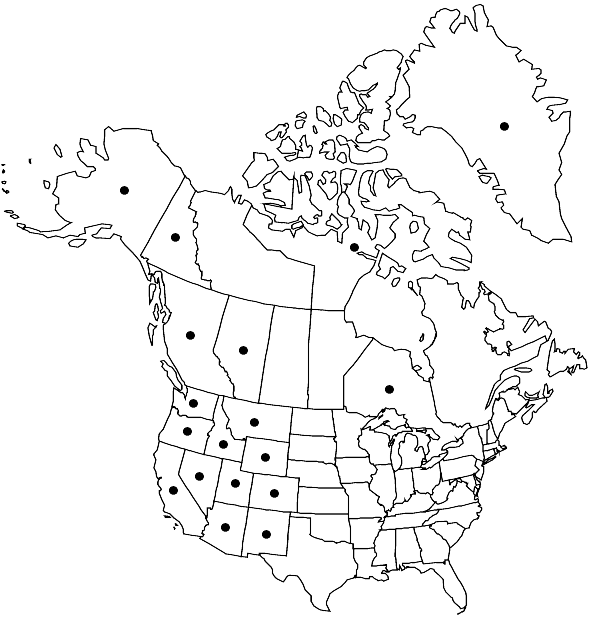Difference between revisions of "Grimmia montana"
Bryol. Europ. 3. 128. 1845,.
FNA>Volume Importer |
FNA>Volume Importer |
||
| Line 10: | Line 10: | ||
|name=Grimmia arctophila | |name=Grimmia arctophila | ||
|authority=Kindberg | |authority=Kindberg | ||
| + | |rank=species | ||
}} {{Treatment/ID/Synonym | }} {{Treatment/ID/Synonym | ||
|name=Grimmia brachydon | |name=Grimmia brachydon | ||
|authority=Austin | |authority=Austin | ||
| + | |rank=species | ||
}} {{Treatment/ID/Synonym | }} {{Treatment/ID/Synonym | ||
|name=Grimmia jamesii | |name=Grimmia jamesii | ||
|authority=Austin | |authority=Austin | ||
| + | |rank=species | ||
}} {{Treatment/ID/Synonym | }} {{Treatment/ID/Synonym | ||
|name=Grimmia montana var. brachydon | |name=Grimmia montana var. brachydon | ||
|authority=(Austin) Lesquereux & James | |authority=(Austin) Lesquereux & James | ||
| + | |rank=variety | ||
}} {{Treatment/ID/Synonym | }} {{Treatment/ID/Synonym | ||
|name=Grimmia tenella | |name=Grimmia tenella | ||
|authority=Müller Hal. | |authority=Müller Hal. | ||
| + | |rank=species | ||
}} {{Treatment/ID/Synonym | }} {{Treatment/ID/Synonym | ||
|name=Guembelia tenella | |name=Guembelia tenella | ||
| − | |authority= | + | |authority= |
| + | |rank=species | ||
}} | }} | ||
|hierarchy=Grimmiaceae;Grimmiaceae subfam. Grimmioideae;Grimmia;Grimmia subg. Guembelia;Grimmia montana | |hierarchy=Grimmiaceae;Grimmiaceae subfam. Grimmioideae;Grimmia;Grimmia subg. Guembelia;Grimmia montana | ||
| Line 48: | Line 54: | ||
-->{{#Taxon: | -->{{#Taxon: | ||
name=Grimmia montana | name=Grimmia montana | ||
| − | |||
|authority=Bruch & Schimper | |authority=Bruch & Schimper | ||
|rank=species | |rank=species | ||
| Line 62: | Line 67: | ||
|publication year= | |publication year= | ||
|special status= | |special status= | ||
| − | |source xml=https://jpend@bitbucket.org/aafc-mbb/fna-data-curation.git/src/ | + | |source xml=https://jpend@bitbucket.org/aafc-mbb/fna-data-curation.git/src/f50eec43f223ca0e34566be0b046453a0960e173/coarse_grained_fna_xml/V27/V27_318.xml |
|subfamily=Grimmiaceae subfam. Grimmioideae | |subfamily=Grimmiaceae subfam. Grimmioideae | ||
|genus=Grimmia | |genus=Grimmia | ||
Revision as of 21:00, 16 December 2019
Plants in hoary cushions, yellow-green to dark blue-green, sometimes almost black. Stems 1–1.2(–1.5) cm, central strand weak. Leaves narrowly lanceolate, rarely ovate-lanceolate, 1–2 × 0.3–0.6 mm, concave-keeled, not plicate, margins plane, usually narrowly incurved distally, awn 0.2–1.3 mm, costal transverse section not prominent to prominent, semicircular; basal juxtacostal laminal cells short- to long-rectangular, straight, thick-walled; basal marginal laminal cells quadrate to short-rectangular, straight, thick-walled, not hyaline; medial laminal cells rounded, thick-walled; distal laminal cells 2-stratose, not bulging, marginal cells 2-stratose, not bulging. Sexual condition dioicous, perichaetial leaves not enlarged. Seta straight, 2–3 mm. Capsule occasionally present, exserted, yellow to brown, oblong, exothecial cells rectangular, thin-walled, stomata absent, annulus of 1 row of quadrate, thick-walled cells, operculum rostellate, peristome present, fully developed, split and perforated in distal half.
Habitat: Exposed acidic granite and sandstone
Elevation: moderate to high elevations (900-4000 m)
Distribution

Greenland, Alta., B.C., Nunavut, Ont., Yukon, Alaska, Ariz., Calif., Colo., Idaho, Mont., Nev., N.Mex., Oreg., Utah, Wash., Wyo., Mexico, Europe, Africa.
Discussion
Grimmia montana is widespread and common on acidic rock in the warm, dry, western interior of North America from southern British Columbia and Alberta southward to California and Colorado. It is very rare at higher latitudes, with outliers known from Alaska, southern Yukon, and northern British Columbia, and a few populations from Greenland and Baffin Island. It is not known from the interior Great Plains, which are largely calcareous. As reported by J. Muñoz (1998b), it is surprisingly absent from seemingly suitable sites in eastern North America. Because its leaf margins can be either plane and/or incurved, it is most commonly confused with G. donniana and G. alpestris, which have plane and incurved margins, respectively. Grimmia montana is readily separated from G. donniana because it is dioicous and lacks stomata, whereas G. donniana is autoicous and has stomata. Gametophytically, G. montana has quadrate to short-rectangular basal marginal laminal cells with thickened transverse walls, while G. donniana has long-rectangular cells with thin walls. Separating G. montana and G. alpestris can be difficult; they have broadly overlapping distributions and both are dioicous and lack stomata. Grimmia alpestris often has bulging, mammilose laminal cells that easily separate it from G. montana, but some stems have leaves that lack this feature. Specimens of G. montana can then be identified by their basal leaf areolation. The basal juxtacostal laminal cells of G. montana tend to be significantly longer than the marginal cells and the two regions are usually distinct. In contrast, G. alpestris tends to have a uniform basal areolation, composed of quadrate to short-rectangular cells.
Selected References
None.